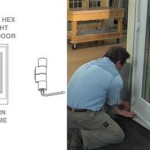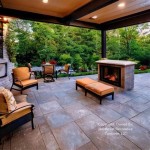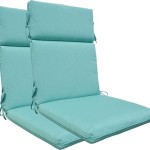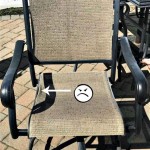Average Cost To Enclose A Patio: A Comprehensive Guide
Enclosing a patio can significantly enhance a home's livable space, providing protection from the elements and expanding opportunities for outdoor enjoyment throughout the year. However, the cost of enclosing a patio can vary widely depending on several factors, making it crucial to understand the components that influence the overall expense. This article delves into the average costs associated with patio enclosures, exploring the different enclosure types, material options, labor expenses, and other related considerations.
Patio enclosures broadly fall into several distinct categories, each offering different levels of protection and aesthetic appeal. These categories include screen enclosures, sunrooms (three-season rooms), and fully insulated rooms (four-season rooms). The chosen enclosure type is a primary determinant of the project's cost.
Screen enclosures are the simplest and most affordable option, primarily designed to keep insects out while allowing fresh air to circulate. Sunrooms, also known as three-season rooms, offer more substantial protection from the elements, typically featuring glass windows and a roof. They are generally not insulated or climate-controlled, making them suitable for use during milder weather. Fully insulated or four-season rooms are the most comprehensive and costly option. These rooms are designed for year-round use and incorporate insulation, heating, and cooling systems to maintain a comfortable temperature regardless of the external weather conditions.
Key Factors Influencing Patio Enclosure Costs
Several factors contribute to the overall cost of enclosing a patio. Understanding these factors enables homeowners to make informed decisions and plan their budget effectively.
Enclosure Type: As mentioned previously, the type of enclosure selected has a significant impact on the cost. Screen enclosures are generally the least expensive, followed by sunrooms, and then fully insulated rooms. The complexity of the construction and the materials required increase with each type, directly influencing the overall expense.
Size of the Patio: The size of the patio to be enclosed is a direct driver of cost. Larger patios require more materials and labor, resulting in higher overall expenses. The dimensions of the patio will also influence the design and structural requirements of the enclosure, further impacting the cost.
Materials Used: The choice of materials for the enclosure, including framing, roofing, windows, and doors, significantly affects the project's cost. Framing materials commonly include wood, aluminum, and vinyl. Wood is often the most affordable option but requires more maintenance. Aluminum is durable and resistant to rust, while vinyl is low-maintenance and energy-efficient. Roofing materials can range from simple corrugated panels to more elaborate shingle or tile options. Window and door materials also vary, with options including single-pane glass, double-pane glass, and insulated glass.
Labor Costs: Labor costs represent a substantial portion of the total project expense. The complexity of the enclosure design, the skills required for installation, and the prevailing labor rates in the area all contribute to the overall labor cost. Hiring experienced and licensed contractors is crucial to ensure proper installation and adherence to building codes, even though their services may come at a premium.
Permits and Inspections: Building permits are typically required for patio enclosure projects, and these permits come with associated fees. The permit fees vary depending on the municipality and the scope of the project. Inspections are also required at various stages of the construction process to ensure compliance with building codes and safety regulations. The cost of permits and inspections should be factored into the overall budget.
Site Preparation: Depending on the existing condition of the patio and the surrounding area, site preparation may be necessary before construction can begin. This can include leveling the ground, removing existing structures, and preparing the foundation. Site preparation costs can vary depending on the complexity of the work required.
Additional Features: Adding additional features, such as electrical outlets, lighting fixtures, ceiling fans, or heating and cooling systems, will increase the cost of the enclosure. These features can enhance the functionality and comfort of the enclosed patio, but they should be carefully considered within the overall budget.
Average Cost Breakdown by Enclosure Type
To provide a more concrete understanding of the average costs, the following section breaks down the expenses by enclosure type, offering estimated price ranges for each option.
Screen Enclosures: Screen enclosures are the most economical option, typically ranging from $5 to $15 per square foot. This cost includes the framing, screen material, and labor for installation. For a standard 200 square foot patio, the total cost of a screen enclosure would range from $1,000 to $3,000.
Sunrooms (Three-Season Rooms): Sunrooms are more expensive than screen enclosures due to the use of glass windows and a more substantial structure. The average cost for a sunroom ranges from $20 to $75 per square foot. This cost includes the framing, windows, doors, roofing, and labor for installation. For a 200 square foot patio, the total cost of a sunroom would range from $4,000 to $15,000.
Fully Insulated Rooms (Four-Season Rooms): Fully insulated rooms are the most costly option, as they require insulation, heating and cooling systems, and more robust construction. The average cost for a fully insulated room ranges from $80 to $200 per square foot. This cost includes the framing, insulation, windows, doors, roofing, heating and cooling systems, electrical work, and labor for installation. For a 200 square foot patio, the total cost of a fully insulated room would range from $16,000 to $40,000.
Cost-Saving Strategies for Patio Enclosures
While enclosing a patio can be a significant investment, there are several strategies that homeowners can employ to reduce the overall cost without compromising quality or functionality.
Choosing Cost-Effective Materials: Opting for more affordable materials, such as vinyl framing instead of aluminum or single-pane windows instead of double-pane windows, can help reduce the cost. However, it is essential to consider the long-term durability and maintenance requirements of these materials before making a decision.
DIY Options for Certain Tasks: Homeowners with some construction experience may be able to handle certain tasks themselves, such as demolition of existing structures, site preparation, or painting. Performing these tasks DIY can save on labor costs. However, it is crucial to ensure that any DIY work is done correctly and in compliance with building codes.
Obtaining Multiple Quotes: Getting quotes from multiple contractors is essential to ensure that you are getting the best possible price. Compare the quotes carefully, considering not only the price but also the contractor's experience, reputation, and references.
Planning the Project During Off-Season: Contractors may offer discounts during the off-season, when demand is lower. Planning the project during the fall or winter months could potentially save money on labor costs.
Simplifying the Design: Opting for a simpler design can reduce the cost of the enclosure. Complex designs require more materials and labor, and they may also require more extensive site preparation.
Phased Construction: If the budget is a concern, consider completing the enclosure in phases. For example, you could start with a screen enclosure and then upgrade to a sunroom or fully insulated room later on. This allows you to spread out the cost over time.
Energy-Efficient Features: Investing in energy-efficient features, such as insulated windows and doors and energy-efficient heating and cooling systems, can reduce energy bills over the long term. While these features may increase the initial cost, they can pay for themselves over time through energy savings.
Enclosing a patio is a significant home improvement project that requires careful planning and budgeting. By understanding the various factors that influence the cost, exploring different enclosure types, and implementing cost-saving strategies, homeowners can create a beautiful and functional outdoor living space that enhances their home's value and enjoyment.

How Much Do Patio Enclosures Cost 2025 Prices

How Much Do Patio Enclosures Cost 2025 Prices

How Much Do Patio Enclosures Cost American Home Center

How Much Does It Cost To Enclose A Porch

How Much Does It Cost To Enclose A Deck Evodek

How Much Does It Cost To Enclose A Deck Evodek

How Much Do Patio Enclosures Cost

How Much Do Patio Enclosures Cost 2025 Prices

How Much Does It Cost To Enclose A Deck Evodek

How Much Does It Cost To Enclose A Porch 2025 Data Angi
See Also








